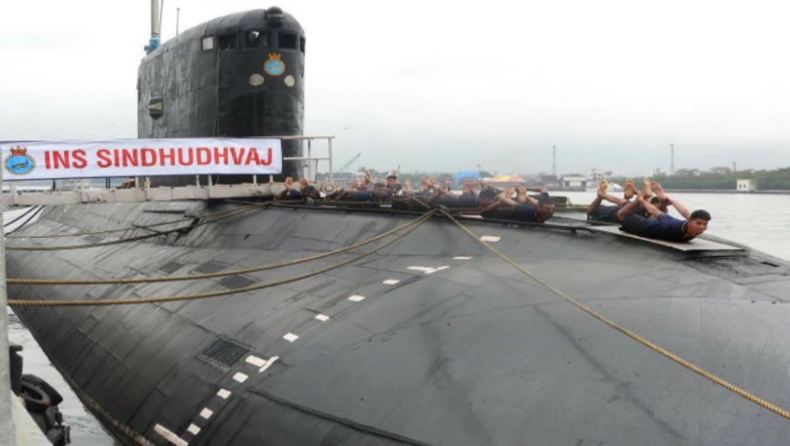For 35 years, INS Sindhudhwaj served the Indian Navy. When it was purchased from the Soviet Union in 1987, it was put into service. In this article India`s submarine situation and decommissioning of INS Sindhudhwaj going to understand.
The decommissioning of INS Sindhudhwaj the Kilo Class diesel electric submarine on Sunday significantly diminished the Indian Navy’s already tiny submarine force. What is the India`s submarine situation, and how does it stack up against the navy of its neighbors?
How does a submarine of the Kilo Class live?
INS Sindhudhwaj served the Indian Navy for 35 years. It entered service after being sold to the Indian Navy by the Soviet Union in 1987 as part of a deal to purchase ten Kilo Class diesel-electric submarines.
Submarines of the Kilo Class have a lifespan of 30 years, albeit following a refit, they can continue operating for an additional 10 years. In a Russian naval facility a few years ago, at least three submarines from the Indian Navy’s Kilo Class underwent a second medium overhaul. A submarine’s ability to be deployed at sea after its shelf life and refits is determined, among other things, by the strength of the hull and the condition of the propulsion system.
How many submarines does the Indian fleet now have?
Sixteen submarines, including a nuclear-powered ballistic missile submarine and seven Kilo Class submarines, are now under the control of the Indian Navy. In the next years, as the Kilo Class submarines reach the end of their operational lives, they will all be decommissioned.
In addition to the seven submarines of the Kilo Class, there are four submarines of the Shishumar Class—INS Shishumar, Shankush, Shalki, and Shankul—and four Scorpene or Kalvari Class—INS Kalavari, Khanderi, Karani, and Vela.
By 2024, there will be two more Scorpene class submarines in service. One ballistic missile submarine of the Arihant class is already in service with the Navy, while another, the INS Agrihat, is being built with an unknown completion date.
What new submarine acquisitions are planned?
Due to issues with vendors achieving the project’s high criteria, Project 751, which intended for the construction of six attack submarines in India, has not resulted in the creation of anything similar. According to the most recent sources, the government has reportedly extended the deadline for responses to the request for proposals for the Rs. 40,000 crore projects to the end of this year.
How many submarines are there in the fleets of China and Pakistan?
China is thought to have 46 diesel-powered assault submarines, six nuclear-powered attack submarines, and six ballistic missile submarines, according to the US Department of Defense. The People’s Liberation Army Navy (PLAN) is expected to maintain an operating strength of 60–70 submarines during this decade.
The Pakistan Navy operates two diesel-electric Agosta 70 class submarines and three French-designed Agosta 90B Air Independent Propulsion submarines. Additionally, it has three midget-class submarines constructed in Italy.
Eight submarines of the Hangor class will be provided by Pakistan under a deal signed with China, four of which will be built in China and four at the Karachi Shipyard and Engineering Works. These submarines will be delivered starting in 2024 and running until 2028.
The Indian government intends to increase the budgets for the Army, Navy, and Air Force. They can therefore be better adorned with ornaments. Additionally, conducting joint defense exercises with other nations improves the effectiveness of Indian defence. Giving the private sector unrestricted access to the manufacturing of equipment will also aid in the development of the economy, the efficient use of resources, and the advancement of the Atmanirbhar Bharat philosophy. These actions will contribute to the improvement of all defense sectors.













